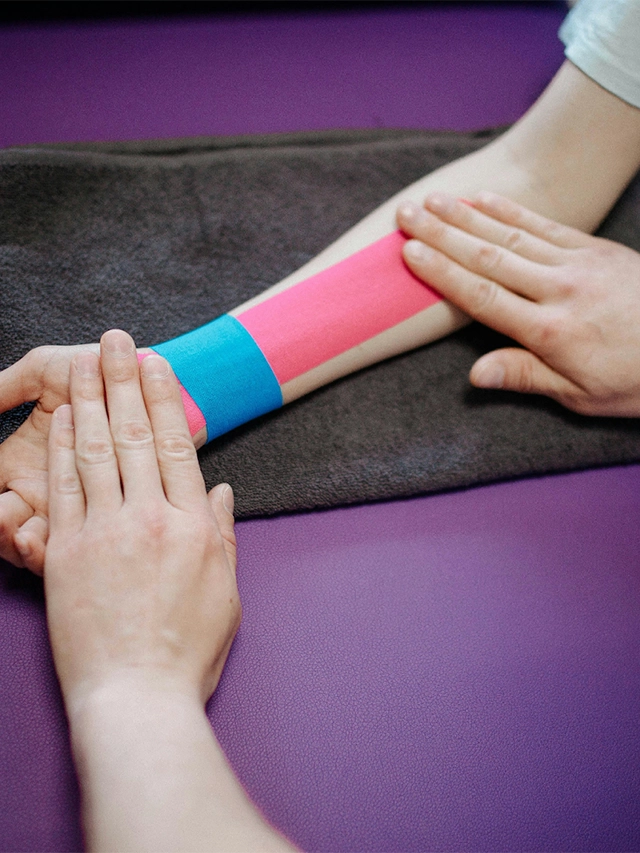Last Updated on June 14, 2024 by Ryan
Have a soft tissue injury and are wondering how to deal with it? Having a soft tissue injury can be incredibly painful and frustrating as you wait for it to heal, but the good news is there is a range of different exercises you can do while you wait.
The exercises you can do to aid with recovery will depend on the severity of the injury. In this article, we’ll take you through some of the best exercises that can boost your strength as you recover from a soft tissue injury.
What is a soft tissue injury?
A soft tissue injury occurs when there is overuse or trauma to muscles, tendons or ligaments. These injuries include, but are not limited to:
- Bruises
- Sprains
- Tendonitis
- Stress injuries
- Strains
How are soft tissue injuries diagnosed?
When someone has hurt themselves, whether it be due to a fall, sports accident, or anything in between, there are a few methods your medical practitioner can use to give you a diagnosis.
- X-rays
While X-rays are mainly used to show damage to bones and don’t specifically show soft-tissue damage, because they show the bones’ spacing, they are also used to spot changes resulting from soft-tissue injuries. One of the biggest reasons why X-rays are often used to diagnose soft tissue injuries is because they are relatively inexpensive and simple compared to other diagnostic tools like MRIs and CT scans.
- Magnetic Resonance Imaging (MRI)
An MRI scan is generally the go-to when diagnosing soft tissue injuries. MRI scans use a strong magnet connected to a computer to create high-clarity, cross-sectional images of the injured part of your body. Going for an MRI scan is usually quite expensive and is not as commonly used as X-ray imaging.
- Computerized Axial Tomography (CAT) or Computed Tomography (CT) Scan
Another way soft tissue injuries can be diagnosed is by using CAT or CT scans. These methods use X-ray equipment and computer technology to also provide cross-sectional images of the soft tissue, which makes them quite similar to an MRI.
Common methods of dealing with soft tissue injuries
It’s always helpful to know how to handle injuries when they occur, whether big or small. Here are some basic medical aid practices that’ll help you deal with these situations in a more effective way:
RICE
RICE stands for rest, ice, compression, and elevation. These steps are great for a number of injuries, including sprains, cuts and most other soft tissue injuries. Here’s how you would apply them:
- Rest: As soon as the injury happens, lie down and relax and avoid moving.
- For swelling, ice compression is an essential step.
- Compression is the third step. This is important because it applies to support and reduces the loss of blood if it’s that type of injury
- Finally, elevation. When an injury occurs, blood rushes to the area, causing that throbbing feeling. Elevating that area will also reduce swelling, pain, and blood loss
Remember that these steps need to be applied to the degree that the injury requires.
Exercises to do when recovering from a soft tissue injury
For those of you who are wondering what exercises you can do during your recovery phase, here are a few to choose from. Remember that to do most of these exercises, you’d need to gauge where you are in recovery first. There’s no point in making your injury worse. Here they are:
Stretching
Stretching is a great way to strengthen and aid your body as it recovers. Focus on gentle stretches for the injured area to improve flexibility and reduce stiffness. Hold each stretch for 15-30 seconds and repeat 2-3 times. Avoid bouncing during stretches, as it can cause further injury.
Range of Motion Exercises
Gentle movements that help maintain or improve joint flexibility without causing pain. Exercises like shoulder circles, wrist rotations, and ankle alphabet exercises are all great examples of these movements.
Low Impact cardio
Gradually introduce low-impact cardiovascular exercises such as walking, cycling, or swimming to improve circulation and overall fitness levels. Start with short durations and low intensity, gradually increasing as tolerated. Again, this depends on what state of recovery you’re in.
Water Therapy
Aquatic exercises in a pool or hydrotherapy can provide a low-impact environment to aid in healing and improve your range of motion. Water buoyancy reduces stress on injured tissues while allowing for gentle movement and resistance.
Functional Training
Incorporate exercises that mimic everyday movements to improve functional strength and flexibility. Focus on movements relevant to your daily activities, such as squatting, lifting, and reaching. Work with your injuries and use them as a guide. When it hurts, stop and rather do something that isn’t too strenuous on your body.
Cross-training
Cross-training exercises are also an effective way of getting some exercise while recovering. For instance, if you’ve hurt your arm or upper body, you could take part in some exercises that focus on the lower body. Pilates and yoga are also good alternatives because they can be tempered.
Common Mistakes to Avoid During Recovery
There are a few common mistakes people make during recovery that we’d urge you to try and avoid. These mistakes disrupt the recovery process and can even cause further damage to the injury. So, it’s best to keep them in mind.
Neglecting Warm-Up and Cool-Down Routines
Warming up and cooling down is a vital part of exercise, and even more so while in recovery. Warming up stretches your muscles, engaging their elasticity and warming them up so they’re ready to perform the activity at hand. The same goes for cooling down. After exercising, your muscles are fatigued. Lactic acid causes them to stiffen and reduce your movement. A cooldown routine can relieve the effects of this, allowing you to feel less stiff and recover faster. So, keep to your warm-up and cooldown routines religiously, especially during recovery.
Returning to Full Activity Too Soon
This issue is common among athletes. When you’re training towards something, being out for a week can set you back a month in training. So, you can understand why some people would want to get back into the swing of things as soon as possible. However, a common mistake that occurs here is exercising as soon as you feel better.
Just because your body has started to feel better doesn’t mean you’re ready to train at the same level as before. You need to gradually ease your body back into things. Otherwise, you could end up worse off. Know your limits, and don’t start the full activity too soon.
Ignoring Warning Signs
Lastly, ignoring warning signs that the injury isn’t fully healed is a one-way ticket to injuring yourself further. Many push towards their fitness goals at the expense of their bodies. So, when it comes to exercising again after being injured, keep an eye out for warning signs. They may come in the form of pain in the injured area or even signs that you’re not as fit as you once were. This should help you avoid re-injuring yourself.
Final Thoughts
The recovery period can be boring when you have a soft tissue injury, but thankfully, there are exercises and activities you can do to strengthen your body and speed up the recovery process. Remember to always listen to your body, don’t push yourself too hard, and enjoy the little bit of time off that you have!





